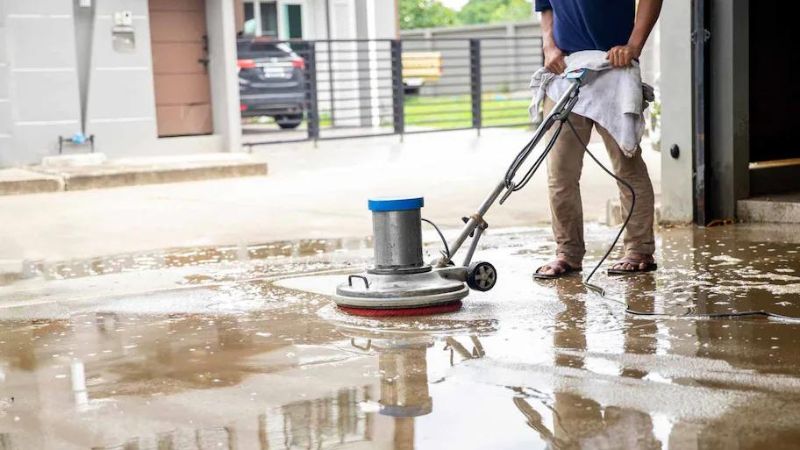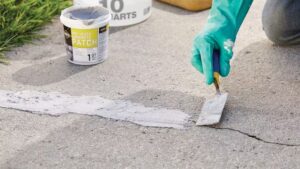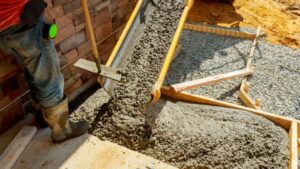Maintaining concrete surfaces is essential to preserving their longevity, appearance, and strength. Whether it’s your driveway, patio, or walkways, concrete is a durable material that can withstand the elements, but it still requires proper care. Without regular maintenance, concrete can crack, chip, and stain, which could lead to costly repairs or replacements.
By following these seven essential tips for effective concrete maintenance, you can keep your surfaces looking new and ensure they stand the test of time. From cleaning techniques to weatherproofing, small efforts can make a significant difference in extending the life of your concrete. Whether you’re a homeowner or property manager, these tips will help you maintain your concrete structures and avoid premature wear and tear. Let’s dive into the steps you can take to keep your concrete surfaces in top shape all year round.
7 Tips For Effective Concrete Maintenance
1. Clean Regularly to Prevent Dirt and Stains
Regular cleaning is one of the most crucial parts of keeping concrete. Because concrete is a porous material, it readily absorbs dirt, oil, and other pollutants, which can cause ugly stains and eventually undermine the structure. To avoid this, it’s important to clean your concrete surfaces at least twice a year using a pressure washer or a stiff brush and concrete cleaner.
Focus on high-traffic areas like driveways, patios, and walkways that are more prone to collecting grime. Regular sweeping and removing surface debris also help minimize long-term staining. By making cleaning a routine, you can preserve the concrete’s appearance and prevent damage. Stains from oil spills, algae, and rust can be difficult to remove, so addressing them promptly is key to keeping your concrete looking its best.
Also Read:- How To Repair Cracks in a Concrete Driveway
2. Seal the Concrete to Protect Against the Elements
Sealing your concrete is one of the most effective ways to protect it from moisture, UV damage, and chemical spills. When exposed to the elements, concrete can fade, crack, or change color without a sealer. A protective layer that helps the surface retain its integrity, repels water, and fights stains is provided by sealing. It’s recommended to reseal your concrete every 2 to 3 years, depending on the level of wear and tear.
This process is particularly important in areas that experience freeze-thaw cycles, as water can seep into the concrete and expand when frozen, leading to cracks. Make sure to use a high-quality concrete sealer suitable for your climate and usage, whether for a driveway, pool deck, or patio.
3. Address Cracks and Damage Promptly
Cracks in concrete may seem small and harmless at first, but they can quickly expand and lead to larger structural issues if left untreated. As concrete is exposed to temperature fluctuations and moisture, even minor cracks can grow, compromising the surface’s durability. To avoid this, inspect your concrete regularly for any signs of cracking or chipping. If you notice any damage, it’s important to address it right away using a concrete patching compound or filler.
For larger cracks, consider seeking professional repair to ensure the issue is properly resolved. By fixing minor damage early, you can prevent it from escalating and extending the life of your concrete surfaces.
4. Control Moisture Levels with Proper Drainage
Water is one of the biggest threats to concrete longevity, especially when it pools or seeps into the surface. Standing water can erode the material over time, leading to cracks, mold growth, and other structural issues. To prevent water damage, ensure that your concrete surfaces have proper drainage.
This includes grading your landscape so water flows away from concrete areas like driveways and patios. Installing gutters or French drains can also help redirect water away from your concrete. Additionally, avoid over-watering plants near concrete surfaces, as excess water can seep in and cause damage. Your concrete will remain in excellent shape and you’ll need less expensive repairs if you maintain proper drainage.
5. Avoid Harsh Chemicals that Can Damage Concrete
While it may be tempting to use harsh cleaning chemicals for tough stains, these can do more harm than good to your concrete. Acidic cleaners, de-icing salts, and strong solvents can eat away at the surface, causing pitting, discoloration, and even weakening the concrete’s structure. Instead, opt for mild detergents or specialized concrete cleaners that are formulated to be safe on concrete surfaces.
For de-icing during the winter months, use sand or other non-corrosive materials rather than salt. If you need to remove stubborn stains like oil or grease, there are concrete-friendly degreasers available. Protecting your concrete from harsh chemicals will extend its lifespan and maintain its appearance.
6. Use Reinforcement to Prevent Cracking
Adding reinforcement to your concrete, such as rebar or wire mesh, can significantly reduce the risk of cracks and structural damage. Reinforced concrete is better equipped to handle heavy loads, temperature changes, and settling, which are common causes of cracks. If you’re pouring new concrete, consider incorporating reinforcement for added durability.
For existing concrete surfaces, crack prevention can be achieved by applying control joints, which allow the concrete to expand and contract without cracking. These joints aid in controlling the way that concrete naturally moves in response to temperature variations. Reinforcing and controlling concrete’s expansion can minimize future damage and keep your surfaces strong.
Also Read:- Tips To Prevent Concrete Cracking
7. Schedule Regular Inspections and Maintenance
Like any structural element of your home, concrete benefits from routine inspections and preventive maintenance. By scheduling periodic checks, you can identify early signs of wear and tear, such as cracks, chipping, or fading, before they become major issues. Inspections should include both the surface and any areas where water may collect, as these are potential weak spots for damage.
If you’re unsure about how to perform these inspections, consider hiring a professional who can offer expert advice on maintaining your specific type of concrete. Preventive maintenance, such as resealing or patching small cracks, will ensure the long-term durability of your concrete and save you money on expensive repairs in the future.
Conclusion
By following these seven concrete maintenance tips, you can protect your investment and prevent costly repairs down the road. Regular cleaning, sealing, and addressing minor issues quickly will keep your concrete surfaces in excellent condition for years to come. Proactive maintenance not only enhances the appearance of your property but also ensures the longevity and safety of your concrete structures. Implement these easy yet effective strategies to preserve the beauty and durability of your concrete, making it a lasting asset to your home or business.
FAQs
How often should I clean my concrete surfaces?
You should clean your concrete surfaces at least twice a year to remove dirt, debris, and stains that could damage the material over time.
Is sealing concrete necessary?
Yes, sealing concrete helps protect it from moisture, cracking, and staining. For best protection, it is advised that you reseal your concrete every two to three years.




